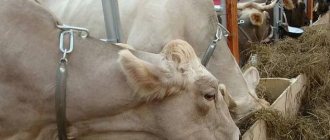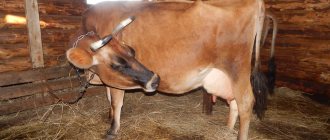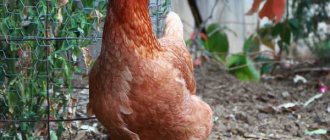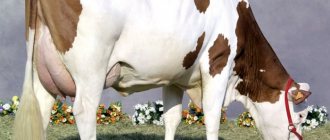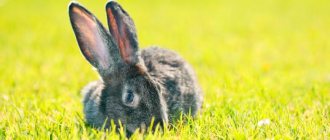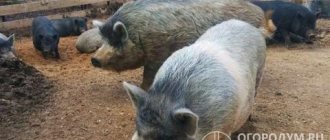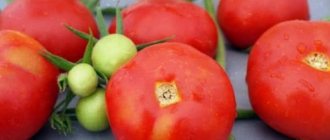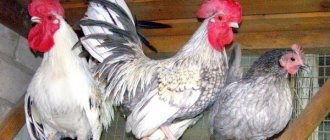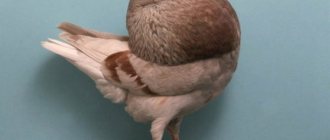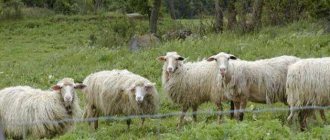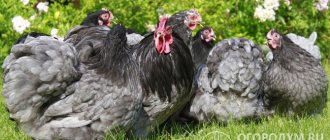The Red Steppe breed of cows is one of the best for growing in large and small farms. Milk yield is high, the immunity of the animals is high, there are no special requirements for maintenance, acclimatization occurs quickly. Cows and bulls of the direction normally tolerate even severe droughts and heat, and this does not in any way affect their productivity indicators. You will learn more about the origin, characteristics of livestock, features of its productivity, breeding, maintenance, and main diseases from this review.
Care and maintenance of calves
Calves are not born muscular like their parents, but they (muscles) appear at one month of age. The daily growth rate of calves is good:
| Newborn weight | Daily weight gain | |
| Chicks | from 40 to 55 kg | from 900 to 1400 g |
| Gobies | from 42 to 73 kg | from 1200 to 1800 g |
The weight of grown bulls at one and a half years reaches 740 kg.
During the first few days, a newborn calf must be closely monitored, since during this period they are still helpless.
The first half hour after birth, the calf must be given colostrum after it is moved to a warm, clean room. There is no need to let the calf drink colostrum from the cow on its own; it is better to express it and feed the baby through a bottle.
The first feeding with colostrum should be carried out in a volume of 4 liters at a temperature of 40 degrees. The sooner the calf tries colostrum, the stronger its immunity will be. Compared to humans, there is no transfer of immunoglobulin from the mother to the calf in utero, so feeding on colostrum is a matter of life and death.
In order for calves to gain weight well, they should be fed in two ways:
Traditional. The calf lives next to its mother and eats her milk at any time. With this method, the mother is calm, and the baby quickly gets on his feet, gets stronger and gains weight well
It is important to understand that the calf cannot completely suck all the mother's milk, and this can lead to mastitis, which has bad consequences. Artificial
In this case, the calves are fed with a special mixture of milk, separated from their mother until they are two months old. 350 ml of milk is consumed per day for feeding.
If calves become ill with something, they must be immediately separated from healthy ones in order to avoid infecting the rest of the offspring. Calves should be weaned from the udder gradually at the age of 5-6 months.
Characteristic
Origin
The breeding of the breed goes back to the distant 18th century. But the first fruits of selection appeared in the 19th century. The breed was registered in 1923, and at that time breeding took place only on the territory of the USSR.
Since the breeds available on the territory were low-yielding, it was necessary to cross them with a breed that had high milk yield. Livestock breeders have different opinions about the origin of the breed and offer several crossing options:
- A mixture of Franconian and Swiss cattle;
- A mixture of Ukrainian cattle with the East Frisian breed, then re-crossing with the Angel and other foreign breeds;
- A cross between local breeds and imported red bulls.
Appearance
It is not for nothing that these animals are considered one of the best breeds in Russia, Kazakhstan, Belarus and Ukraine. They have a pretty good characteristic:
- At birth, bull calves weigh no more than 40 kg, while cow cows are born weighing no more than 30 kg;
- The weight of bulls reaches up to 900 kg, the weight of cows does not exceed 500 kg;
- They have a fairly strong build;
- They belong to the dairy type of productivity;
- The color of the coat is always red, the difference can only be in the tones. The spots can be either light red-brown or dark red;
- The neck is quite narrow and long, has many folds;
- Very often cows have a defect in the udder; it is uneven.
What does a red steppe cow look like?
Productivity
For the type of milk production, the cows are very good. The average milk yield is approximately 3000-4000 kg. But in breeding farms, cow cows give better results, because their milk yield ranges from 4000 to 5000 kg, with a fat content of 3.8-4%. There are also record-breaking cows that can produce up to 12,000 liters of milk, and the fat content of such milk reaches 5%.
Maintenance and care
The level of animal productivity is influenced by several factors, the main of which are living conditions, quality of feed and care. To keep animals, you will need a barn with certain temperature and humidity parameters and an open area for walking.
Summer playground
Keeping cattle is impossible without walking. Daily walks in the fresh air are necessary for the normal functioning of the body, the stable functioning of the animal’s internal organs and systems. Only with regular walking is good health and high productivity possible. Cows can walk all year round, except during times of unfavorable weather conditions - severe frost, icy conditions.
Important! Animals should walk at least 2-3 hours a day. Only pregnant individuals who have 2-3 days left before giving birth are not allowed out for walks.
It is advisable that a fenced area with a canopy be provided for cattle walking, where animals can hide from sunlight, rain, hail, and snow
The recommended area of such a pen is 20 square meters. m per 1 individual. The summer area should be convenient for milking. It must be equipped with drinking bowls. And in the fall and spring, if there is not enough grass that can be eaten, it is necessary to install feeders.
It is advisable that a fenced area with a canopy be provided for cattle walking, where animals can hide from sunlight, rain, hail, and snow. The recommended area of such a pen is 20 square meters. m per 1 individual. The summer area should be convenient for milking. It must be equipped with drinking bowls. And in the fall and spring, if there is not enough grass that can be eaten, it is necessary to install feeders.
Arrangement of the premises
It is best if the barn is made of brick or limestone. In order for cows to feel comfortable in winter, it is necessary to make it warm by insulating it with fireproof insulation, resistant to detergents and disinfectants. A warm barn will protect animals from colds and will allow them not to reduce productivity even in winter. It is desirable that the floors in the cow's dwelling should also be insulated, made of wood.
Did you know? The average lifespan of a cow is 20 years. The record for longevity was recorded by a cow named Modoc in the USA. She lived to be 78 years old and died in 1975.
If they are cement or concrete, then you can put wooden panels on them. The floors are covered on top with a bedding of straw (20 cm layer), peat (10 cm) or hay (20 cm). This litter will need to be periodically changed and added. The recommended barn area is 20 cubic meters. m per 1 adult, 10 cubic meters. m for 1 calf.
The barn must be equipped with high-quality ventilation that can remove excess moisture and ventilate the room well. This will prevent the development of many diseases in cows. Ideally, the barn should be equipped with a drain or sewer and the floor should be sloping to facilitate regular cleaning. Different sections of the barn should contain bulls, dry cows, and young animals.
Conditions of detention
The red-motley breed withstands various conditions of detention, however, the highest productivity can be achieved from it only if the following parameters are created in the barn:
- air temperature - +5...+20 degrees;
- air humidity - 50–70%.
Regular cleaning of stalls and equipment
Cattle must be kept clean. Feces must be removed daily, preferably in the mornings and evenings. You also need to wash drinking bowls, feeders and equipment used every day. Litter is added once every 7–10 days, and complete replacement is done once a month. Cleaning with disinfectants is carried out 1-2 times a year. A complete inspection of the condition of the barn - once a year.
Preparing for milking
In order for milking to be successful, the cow and the area must be prepared. Preparing the site is as follows:
- Remove manure.
- Replace the bedding.
Important! Massage of the mammary glands allows you to increase the productivity of cows by 33%, and is a preventive method against a number of diseases. The animal is prepared as follows:
The animal is prepared as follows:
- Clean the wool.
- Tie up the tail.
- Wash the udder with warm water.
- Wipe until dry with a clean towel.
- Massage all lobes.
Subtleties of breeding
The peculiarity of breeding the white-headed cattle breed is free range. By moving a lot and constantly searching for food, animals eat a variety of foods well, build muscle mass and gain weight.
Free-ranging herd
Areas favorable for breeding
Although the Kazakh white-headed breed was bred for Kazakhstan, it has taken root in various regions of Russia (Saratov, Samara, Orenburg regions, Buryat Autonomous Okrug, Altai), Mongolia, Belarus and Ukraine.
Features of calving in the Kazakh breed
Females are considered sexually mature after one and a half years, but are ready for insemination at 14 months and are capable of producing offspring up to 15 years of age. Natural fertilization is preferable, which gives 95% of successful attempts, while the artificial method gives a maximum of 80% of the result. Bulls become capable of insemination at 16 months.
During pregnancy and calving, human assistance is not needed, except perhaps enhanced nutrition. A calving cow after 285 days of pregnancy produces only one calf.
Kazakh white-headed calf
Childbirth is easy, largely due to the small skull of the newborn. Strong young animals, long-term milk feeding (up to 3 months) plus a powerful maternal instinct provide 100% survival of the offspring. A calf will need almost 1.5 tons of milk for the entire period of growing up (3 months), but breeders agree to this, since when breeding a meat breed, cows are not even milked.
Milk becomes normal a week after calving. After just a month, the females are ready for a new mating, but it is worth giving two to three months of rest so that the cow has time to recover; moreover, after fertilization, milk yield decreases.
conclusions
- The Red Steppe breed is the main dairy product in Russia. It is actively bred in 14 regions of the Russian Federation.
- Animals normally endure all the “hardships” of the steppe climate - poor food, drought.
- The resistance of red steppe cattle to diseases is high, but vaccination against anthrax, emkara, and foot-and-mouth disease must be done. Also, keep a close eye on ticks and gadflies, and take immediate action if you suspect infection with pulmonary or gastrointestinal parasites.
- In order for a cow to have milk all the time, she needs to be inseminated once a year. Please note that all animals need rest - the duration of the dead period depends on the health of the animal, conditions of detention and is up to a maximum of 70 days.
- When milking by machine, females often develop mastitis, so after each milk yield you need to massage the animal's udder.
Conditions for keeping cows
Although these cows are quite unpretentious to weather conditions, they still need proper care like a dairy animal. Dairy animals should be fed and given water to drink no more than three times a day. You need to avoid spoiled and cold foods in your diet. The cow needs fresh bedding, and it is necessary to arrange a warm place. This will help prevent udder swelling after calving and other undesirable consequences after calving. If everything is done correctly, the cow will calve about 4 times in three years.
Every dairy cow needs a dry period. It lasts for about 2 months for cows with good productivity and weight. For weaker cows with less weight, the dry period should be at least 70 days. If a cow is continuously milked during the period between calvings, the milk yield and milk fat content will drop sharply, and the likelihood of weak, possibly sick offspring will increase.
Feeding
The red steppe breed of cows is not very picky about food. However, animals need to be fed correctly. It is strictly forbidden to feed:
- Cold and icy foods;
- Rancid or rotten. If you feed such food to a pregnant cow, the fetuses will die.
Good food is any food of animal or plant origin, as well as concentrated formulations. In summer, pastures with dense vegetation provide an excellent source of food. In winter, due to the lack of fresh and juicy grass, livestock are fed hay with additives in the form of mixed feed.
Description
Meat and dairy animals belong to the same species, but differ in their final productivity. The result depends on the physical characteristics of the living creatures and the characteristics of their exterior.
Dairy cattle are determined by:
- poorly developed muscles, dryish physique;
- an oblong body, with the back of the cattle wider than the sternum, shaped like a triangle;
- the limbs are long, the back is straight;
- the neck is mobile, elongated, skin gathers are present;
- the skeleton is simple, strong;
- The udder is voluminous, with veins visible on it, the nipples are cylindrical.
Dairy cows are gentle and friendly. Animals are adapted for keeping in stalls, walking on pastures or mixed type of care. The organs of cattle, in particular the gastrointestinal tract, cardiovascular system, and respiratory organs, are well developed.
A balanced feed base, filled with minerals, vitamins, and nutritional components, allows you to obtain high-quality milk yield.
How to choose a dairy cow
When choosing an animal, you need to pay attention to appearance (exterior), age, as well as some other physiological indicators. Cows with high milk yields have the following characteristics:. Cows with high milk yields have the following characteristics:
Cows with high milk yields have the following characteristics:
- the head is small, elongated;
- the neck is thin and folded, with a slight dewlap;
- the withers are straight, high, not very wide;
- the back is level, the transition of the lower back to the croup is without depressions;
- the belly should not be too tight or very saggy;
- limbs must be strong;
- the coat is smooth and shiny, and the skin is dense (with a small amount of subcutaneous fat), thin and flexible.
Particular attention should be paid to the udder:
- thin skin with sparse hairs;
- well-developed venous network;
- a wide milk well (abdominal depression) into which the milk vein flows: it can be felt with fingers on both sides of the body (the wider the ring, the higher the milk yield);
- The udder lobes are identical, the teats are conical or cylindrical, 6–8 cm long.
Find out what udder diseases cows have.
To avoid purchasing a very old cow, you need to pay attention to:
- teeth that grow in cattle at certain periods, so the presence of a specific tooth indicates the exact age of the animal (after the appearance of all teeth, the age is determined by the degree of their abrasion and wear);
- horn rings that appear after each calving: in heifers, age is determined by the length of the horns; in 1 month they extend by 1 cm.
There are also some folk signs indicating the high productivity of cows:
- the deeper the depressions between a cow's horns, the more milk she gives;
- a low-hanging forelock on the head is also a sign of high milk yield;
- the rounded tip of the tail is yellowish in color - evidence of good fat content of the milk;
- pits below the shoulder blades are evidence of good productivity.
Important! Peak milk production occurs after 5–6 calvings. Dairy cows are also distinguished by their calm nature. In order to have enough dairy products, you must not only choose a dairy cow, but also take into account all the recommendations listed above
In addition, to obtain high-quality milk, animals need a balanced and varied diet, as well as good living conditions.
In order to have enough dairy products, you must not only choose a dairy cow, but also take into account all the recommendations listed above. In addition, to obtain high-quality milk, animals need a balanced and varied diet, as well as good living conditions.
Dairy cows are also distinguished by their calm nature. In order to have enough dairy products, you must not only choose a dairy cow, but also take into account all the recommendations listed above. In addition, to obtain high-quality milk, animals need a balanced and varied diet, as well as good living conditions.
What are the origins of the breed
The roots of the appearance of the red steppe breed go back to the end of the 18th century. In those distant times, Ukrainian lands were part of the Russian Empire, which was actively expanding its borders. One of its new acquisitions was the Tavria Peninsula, known to us today as Crimea. It was there, in the area of the Molochnaya River, which flowed through the territory of the Tauride province, that the heroes of this review appeared. The fauna of this territory was not very diverse in the village, so the residents began to breed red-steppe cows.
Content Features
Let's consider the features of keeping and breeding red steppe breeds of cattle.
Breeding bulls and heifers
In order for a cow to constantly have milk, she needs to be inseminated once a year - this will be enough to maintain constant lactation, increase milk yield, and increase livestock reproduction rates. Fertility is the highest - there are approximately 100 calves per 100 cows. Calving is easy and human intervention is almost never required. Females show maternal instinct not only to their calves, but also to other babies in the herd.
This article will tell you about the cow barn.
Although calving is easy for the breed, be careful - females with congenital defects and acquired injuries may have problems.
The red rock is unpretentious to external climatic conditions, but, like any other trend, it requires proper care. If you do everything right, you can easily reach calving rates of up to 4 times in 3 years. The so-called dry period is very important for cows, when they rest without milking. If the animal is weak and poorly fed, rest should last up to 70 days; for healthy animals, 40-60 will be enough. It is impossible to shorten the dry periods, otherwise you can lead to a reduction in productive milk yield, a decrease in the fat content of milk, and the birth of non-viable young animals.
Pregnant heifers are watered and fed three times a day (no longer necessary), and the cleanliness of the bedding is carefully monitored. Do not give your animal spoiled or cold foods, as this can kill the fetus. Pregnant females should walk in the barn and in the air - this is necessary to reduce the risk of udder swelling.
You can find out about rubber mats for cattle here.
Diseases
Red steppe breeds are highly resistant to stressful weather conditions and to a number of diseases. For example, leukemia, which causes the culling and slaughter of sick animals, is practically not scary for them, like most respiratory infections. But, despite their endurance and strong constitution, cows need to be vaccinated against anthrax, emkara, and foot-and-mouth disease. For gastrointestinal and pulmonary parasites, preventive treatments are carried out seasonally or as needed. Bodfly larvae and ticks need to be dealt with taking into account the situation - if you notice the appearance of larval capsules of the gadfly on the back, treat immediately.
Read about ventilation in the barn in this material.
Description and characteristics of red steppe cattle
Bulls of the Red Steppe breed can grow up to 900 kg, and cows - up to 400-500. Newborn calves weigh up to 40 kg, heifers up to 30 kg. By the age of six months, young animals can reach 200 kg (subject to proper feeding). The color of the animal is reddish, but the intensity of the shade can be different - from fiery red to dark cherry. Just like the Krasnogorbatovskaya breed of cows. Some individuals are born with white spots (usually on the legs, head, udder). The main features of the direction are the oblong angular body.
Other characteristics of the breed:
- weak thin bones;
- straight strong legs;
- voluminous belly;
- deep narrow chest;
- insufficiently formed dewlap;
- thin long neck covered with folds;
- raised mane.
The breed's udder is small and round, but in many females it does not develop quite correctly, or the parts are simply uneven.
The productivity of heifers largely depends on the climatic conditions of rearing. For example, in the steppe regions, every year you can receive 3-4 thousand kg, or even increase this volume to 5 thousand kg, if you properly organize the care of livestock. Milk has a fat content of 3.8%. The red breed is an early ripening breed - it is inseminated at the age of 15-19 months. In terms of quantitative and qualitative productivity indicators, it is slightly inferior to the Bestuzhev breed. In Russia, red steppe cattle are the second most popular.
The red steppe cow belongs to the dairy production type
Advantages and disadvantages
This breed developed in natural conditions and was subjected to natural selection. Its individual characteristics ensure a high survival rate of both young and adult individuals.
- Pros:
- Sufficiently high level of milk yield with proper feeding.
- Rapid weight gain to killer condition.
- Strong immunity, as a result, a high percentage of young animals transferring to the replacement herd and rapid recovery of cows after calving.
- Undemanding in feeding, high adaptability to living conditions.
- Accelerated acclimatization.
The disadvantages of the Red Steppe breed are mainly associated with haphazard intra-breeding and lack of selection during the first two centuries of its existence.
- Minuses:
- Excessively thin and fragile bones, thin sensitive skin.
- Narrow drooping croup, affecting the female’s ability to bear a child.
- Incorrect positioning of the limbs, weak muscle corset.
- Udder defects - asymmetrical lobes, underdevelopment.
- Low meat yield at slaughter.
Origin and selection of the Red Steppe breed of cows
The red steppe rock was originally formed in the steppe zone, that is, in arid climatic conditions. It is based on domestic breeds and East Friesian cattle. Homeland - southern regions of Ukraine. The types of crossings that were used during selection are absorption and reproductive. The active spread of the red steppe breed from Ukraine to other regions began in the second half of the 19th century. Under new conditions, further crossings were carried out, which led to the emergence of different offspring and breed groups. One thing is for sure - red steppe cattle are perfectly adapted to the steppe climate and scarce feed resources. Read about loose housing of cows here.
The red steppe cow was bred in southern Ukraine
At the beginning of the twentieth century, the red steppe cow was the most popular in the Kuban, Crimea, Ukraine and the foothills of the Caucasus.
Popular myths about the breed
Many people are afraid to buy a blue cow because of rumors among farmers. The most common myths about the Belgian cow are described below:
- Cows of this breed do not live long. This is a myth, because Belgian cattle live no less than cows of other breeds, and the offspring survive in 100% of cases.
- Constantly swollen limbs. In fact, there is a predisposition to swelling, but it is not as great as they say and it can be easily cured. The hooves are strong enough to support your weight and even move quickly and confidently.
- Due to the fact that representatives of this breed are a product of genetic engineering, meat and milk cannot be consumed. In fact, the gene that is responsible for muscle mass does not have a detrimental effect on the human body. The birth of deformed calves is no more common than with other breeds.
Advantages and disadvantages
The breed is quite popular for a reason. It has its own distinctive characteristics compared to other breeds. The advantages of the breed include:
- Excellent acclimatization;
- Unpretentiousness in food and maintenance;
- Nutritionally, the milk is of excellent quality;
- Strong immunity that protects against the dangerous disease leukemia;
- Good endurance;
- Excellent reproductive qualities.
Despite the fact that the red steppe cow is very popular and has many advantages, there are still disadvantages:
- Uneven udder, often leading to mastitis if milking is done by machine;
- Quite weak muscles in the lower extremities. It is considered a disadvantage due to the likelihood of injury on hilly surfaces.
There are significantly fewer disadvantages than advantages, which distinguishes this breed as the best among others.
If you have a choice in purchasing a dairy cow, then the red steppe breed is definitely worth considering. Such a cow will be very unpretentious in food and maintenance. Owners will be guaranteed high milk yield and top quality milk with excellent fat content.
Possible diseases
Blue cows have strong immunity. The breed is resistant to leukemia. Not a single case of illness with a dangerous disease has been registered. Animals are also distinguished by the absence of genetically fixed mastitis.
The main problems arise from poor care:
- Keeping in pens with poor ventilation.
- Dirt and irregular cleaning.
- Bedding that is rarely changed becomes a breeding ground for pathogenic bacteria.
- Unbalanced feeding.
Epidemics are also dangerous for blue cows. Timely vaccination will protect against rabies, foot and mouth disease, anthrax and other deadly diseases.
Summer heat is favorable for the development of pathogenic microorganisms. Sanitizing the barn will prevent problems. To maintain the health of animals, it is advised to observe hygiene measures and monitor the condition of the cows. If behavior is uncharacteristic, call a veterinarian. Isolating sick individuals will stop the spread of infection among the rest of the population. The Latvian blue cow is a rare species that has a hundred-year history of development. Now the conservation of blue animals depends on the efforts of enthusiasts and the support of the authorities.
